
Becoming the busiest bus terminal in the world doesn't happen without also bearing the brunt of blame every time a commute goes horribly wrong — deserved or otherwise.
The 71-year-old Port Authority Bus Terminal is legendary. Its revolutionary design widened the doors of Manhattan decades ago to commuters across the Hudson River, but in recent years it has fallen victim to age, operating well beyond its capacity.
"It exemplifies the craziness and congestion we often associate with midtown Manhattan — people are everywhere, passengers are everywhere, buses are coming and going seemingly every few seconds," said Joseph Schwieterman, director of the Chaddick Institute for Metropolitan Development at DePaul University. "The problem is our standard of service has risen so much that passengers view it as too crowded and spartan."
But it wasn't always that way.
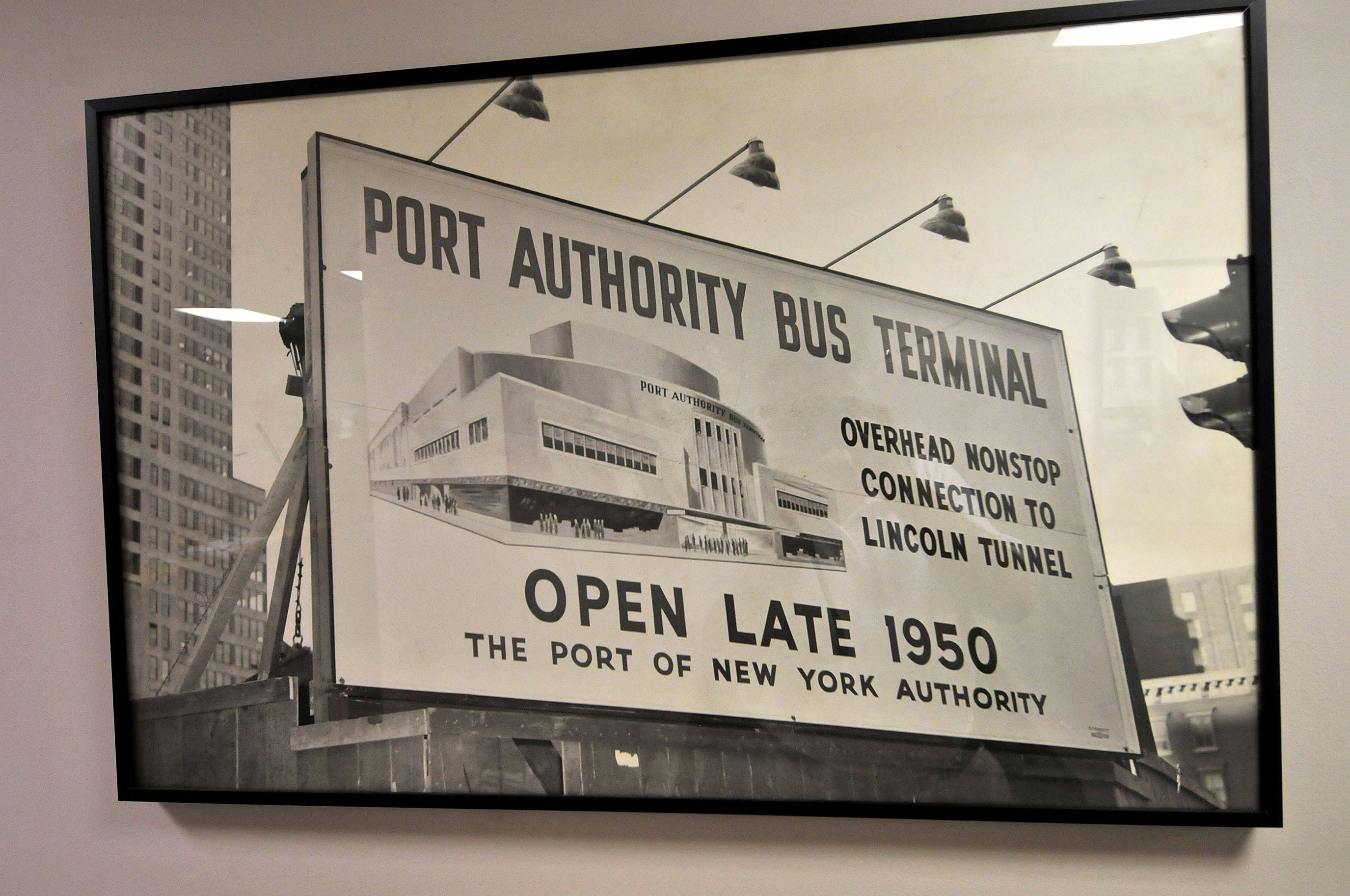
“In its day it was new, it was safe, there were amenities and it served the people, and it totally increased the quality [of life] — hard to believe right?” said Cedrick Fulton, who managed the facility from 1998 to 2004.
It’s been reinvented, rehabbed, expanded and everything in between, but the day has finally come to overhaul the terminal.
Officials face the monstrous task of designing a bus terminal that can stand the test of time for coming generations — as its predecessor did.
“You’re designing for what's there now, what's going to be in the next few years, what's going to be in the next decade and what's going to be in decades to come,” said Steven Plate, director of capital projects for the Port Authority of New York and New Jersey. "It’s going to be quite challenging, but a lot of fun."
'Maligned' but 'productive' legacy
Despite all its faults and age-inflicted grime, the daily operations of the Port Authority Bus Terminal are a spectacle to behold.
During pre-pandemic morning rush hours, 1,850 buses made their way through the Lincoln Tunnel daily, bending around tight curves along the terminal's ramps. A maze of stairs and escalators escort thousands of customers who are funneled into glassed-in boarding booths, where they stand in line waiting for tightly timed buses directed by staffers with walkie-talkies and neon vests.
"The terminal is in a class of its own, with no rivals approaching its significance," said Schwieterman, who studies intercity bus patterns.
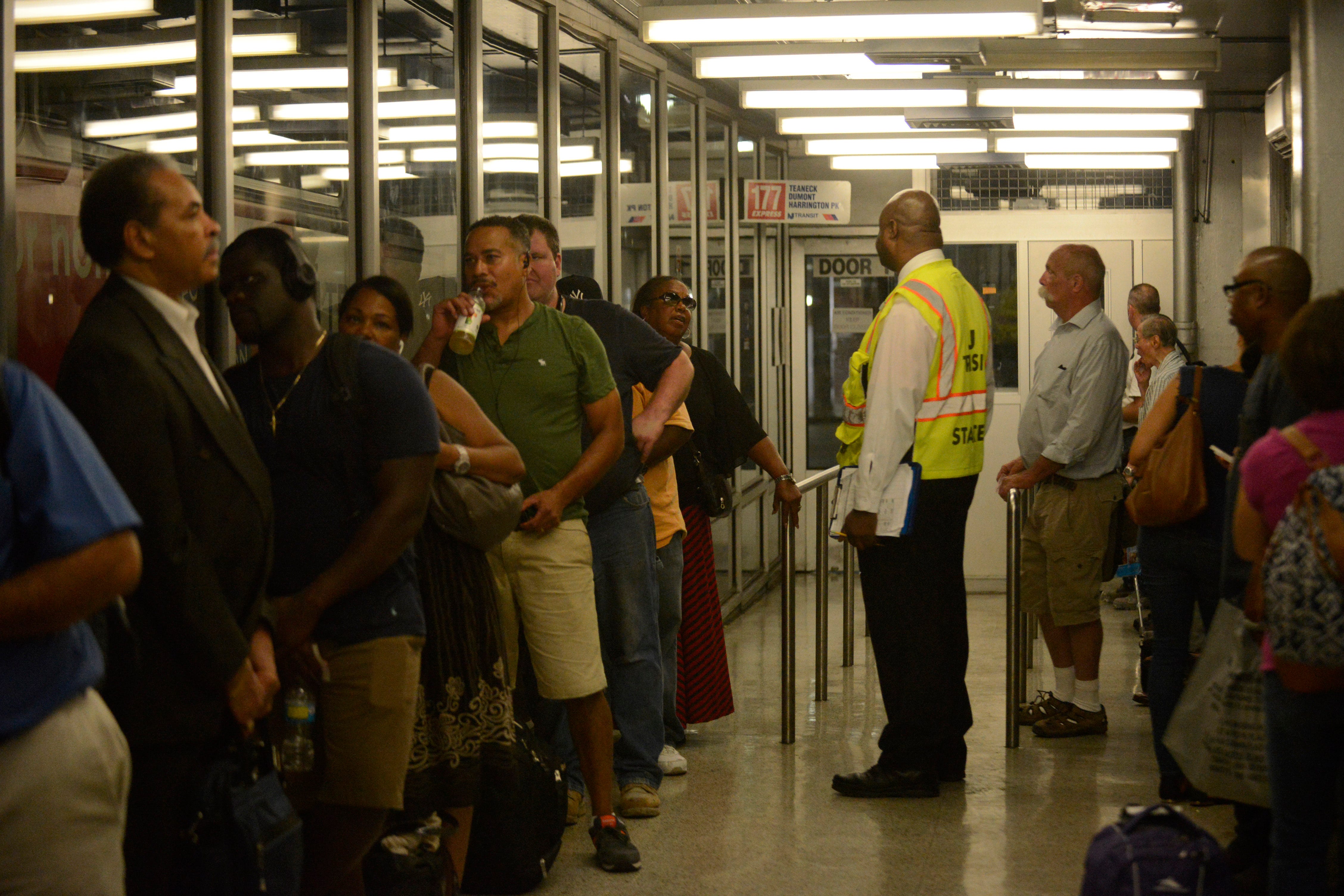
For some of the bus terminal’s current and former directors, being in charge of the cogs of such a transportation behemoth was a dream.
Diannae Ehler has worked for the Port Authority for 38 years, starting as an intern and working in a number of Port Authority departments over the years. Her first introduction to the bus terminal came in 2005 when the general manager position opened up.
“I came in to do some recon, and I was walking around the Port Authority Bus Terminal ... to help me with my interview,” said Ehler, who has served as director of bridges, tunnels and terminals since 2017. “And when I was walking around it, I was just amazed and I was like, ‘I want to run this building.’ It was just the size of it, the magnitude, the people.”
The bus terminal’s opening in 1950 was historic for many reasons. Its construction prevailed against the wishes of the powerful city planner Robert Moses, who rarely lost fights. It became the affordable mode of transport for the New Jersey commuter who couldn’t easily access the train or couldn’t afford — or didn't care — to drive a car into the city each day.
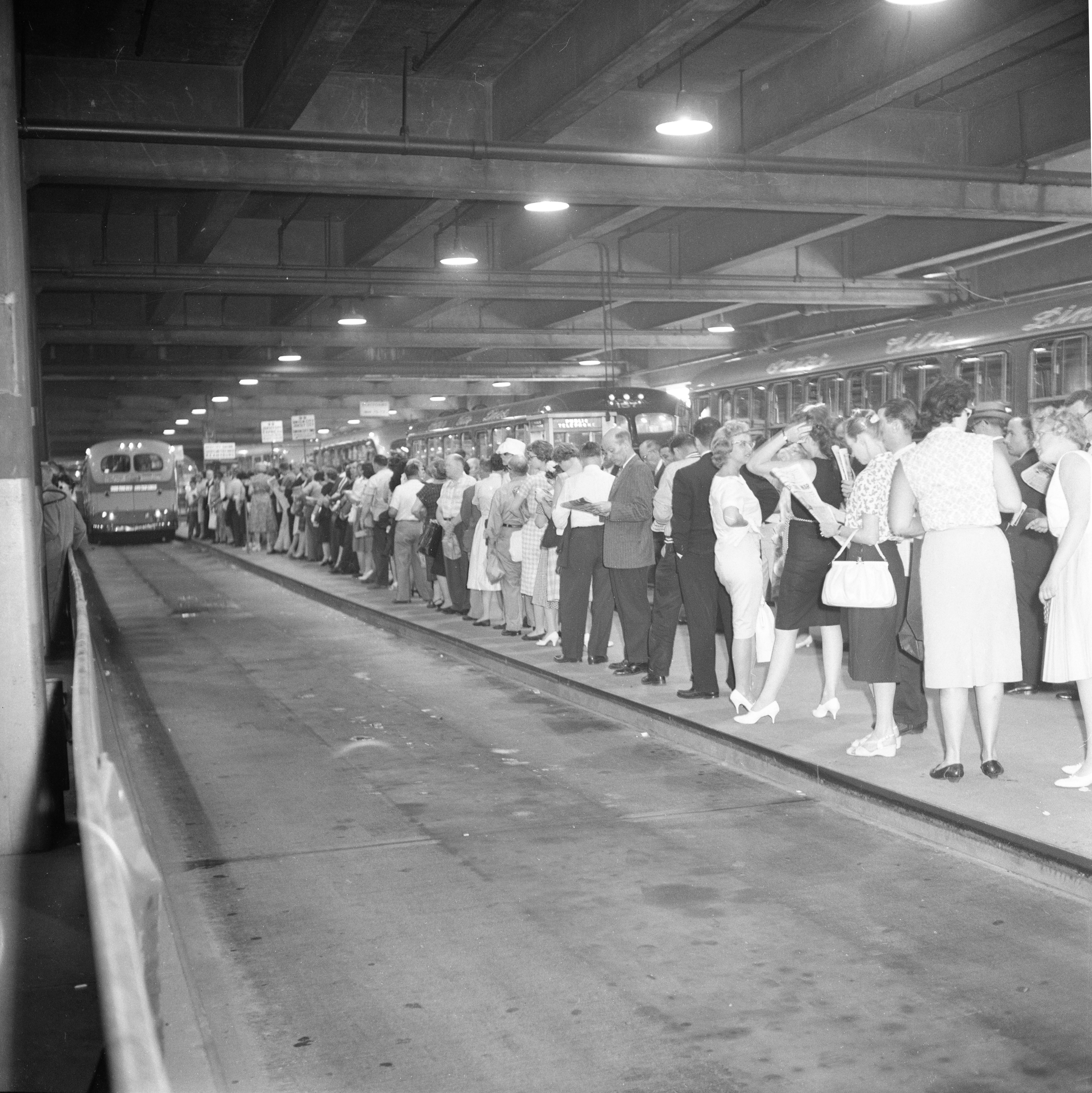
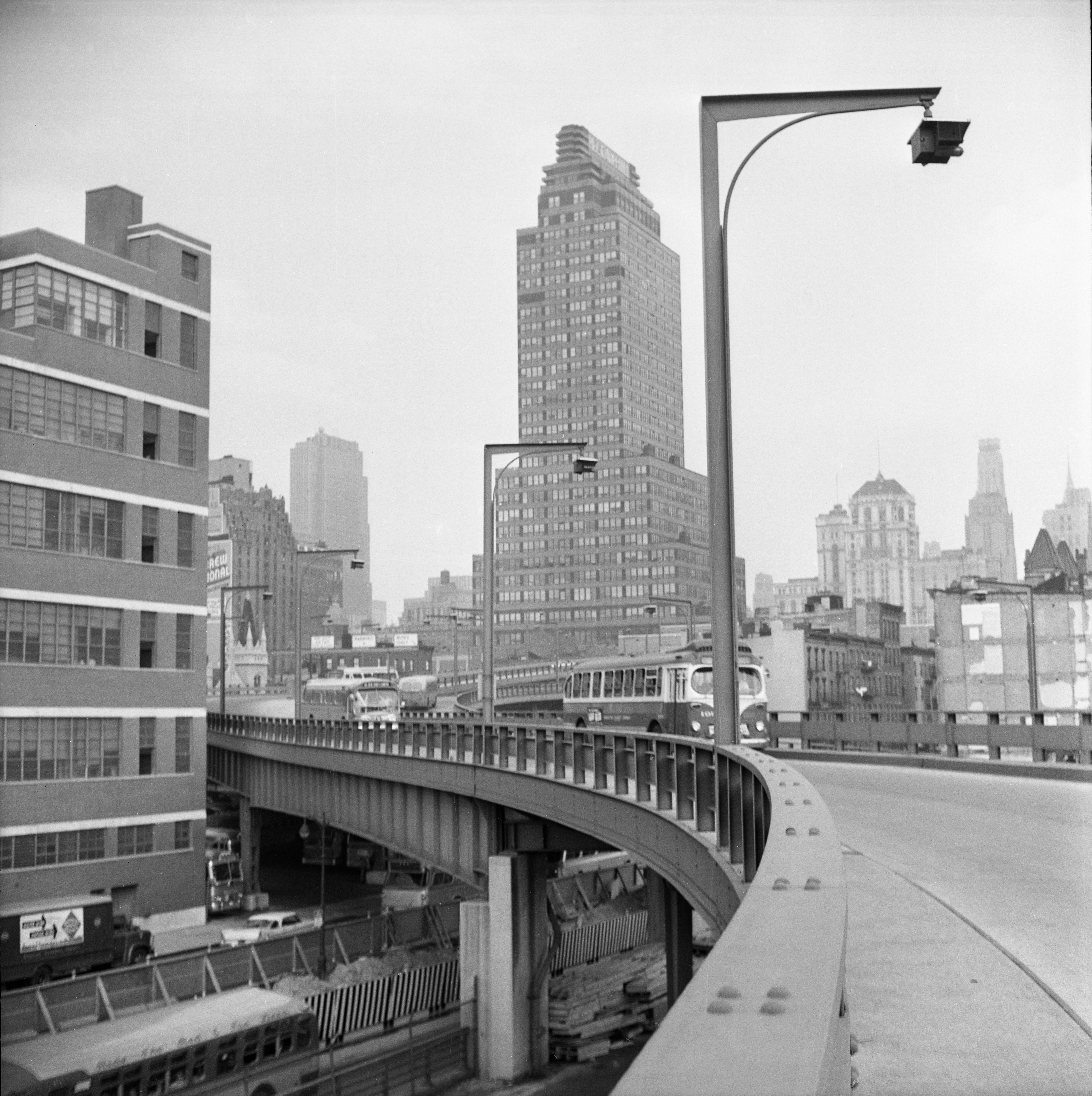


“In its heyday, when you look at the pictures of the gentlemen and ladies coming to work with top hats … it’s quite charming," Fulton said.
The crisscrossing steel trusses give it a rugged, industrial-looking exterior that screams practical and minimalist — not so much architectural art. But for those familiar with its innards, it’s an engineering marvel.
“Much maligned … but amazingly productive every single day,” Fulton said. “The ramp system is genius, first and foremost; the direct connection to the Lincoln Tunnel provides for efficiencies that wouldn’t be possible without them.”
The popularity of bus commuting over the Hudson River has steadily risen over the last seven decades, with some 260,000 people a day coming through the terminal pre-pandemic.
The exclusive bus lane that connects New Jersey's highways to the Lincoln Tunnel and into the terminal was meant to handle 650 buses during the morning rush hour. It now feeds almost three times that many buses into a terminal that is unable to handle that volume.
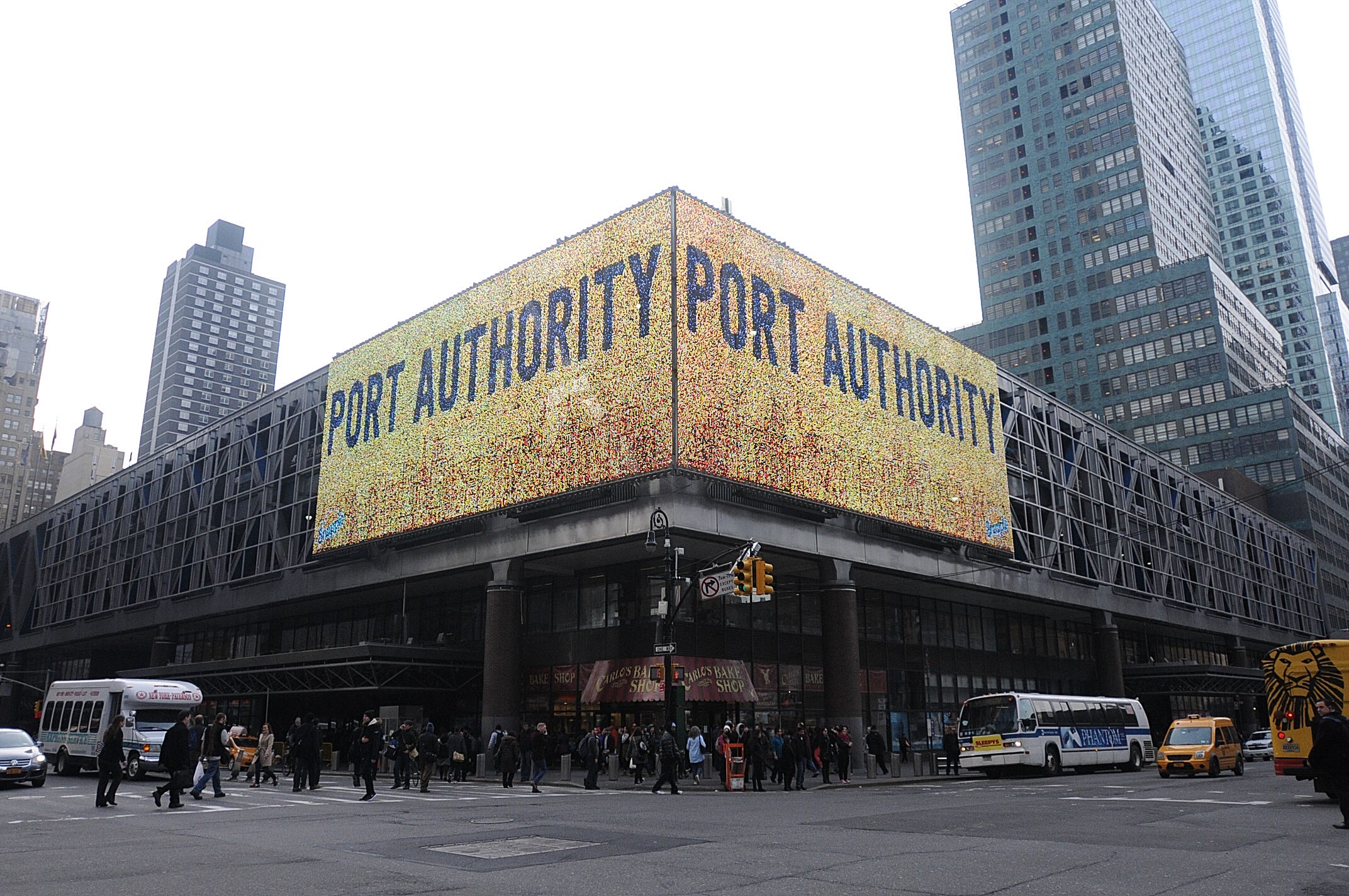
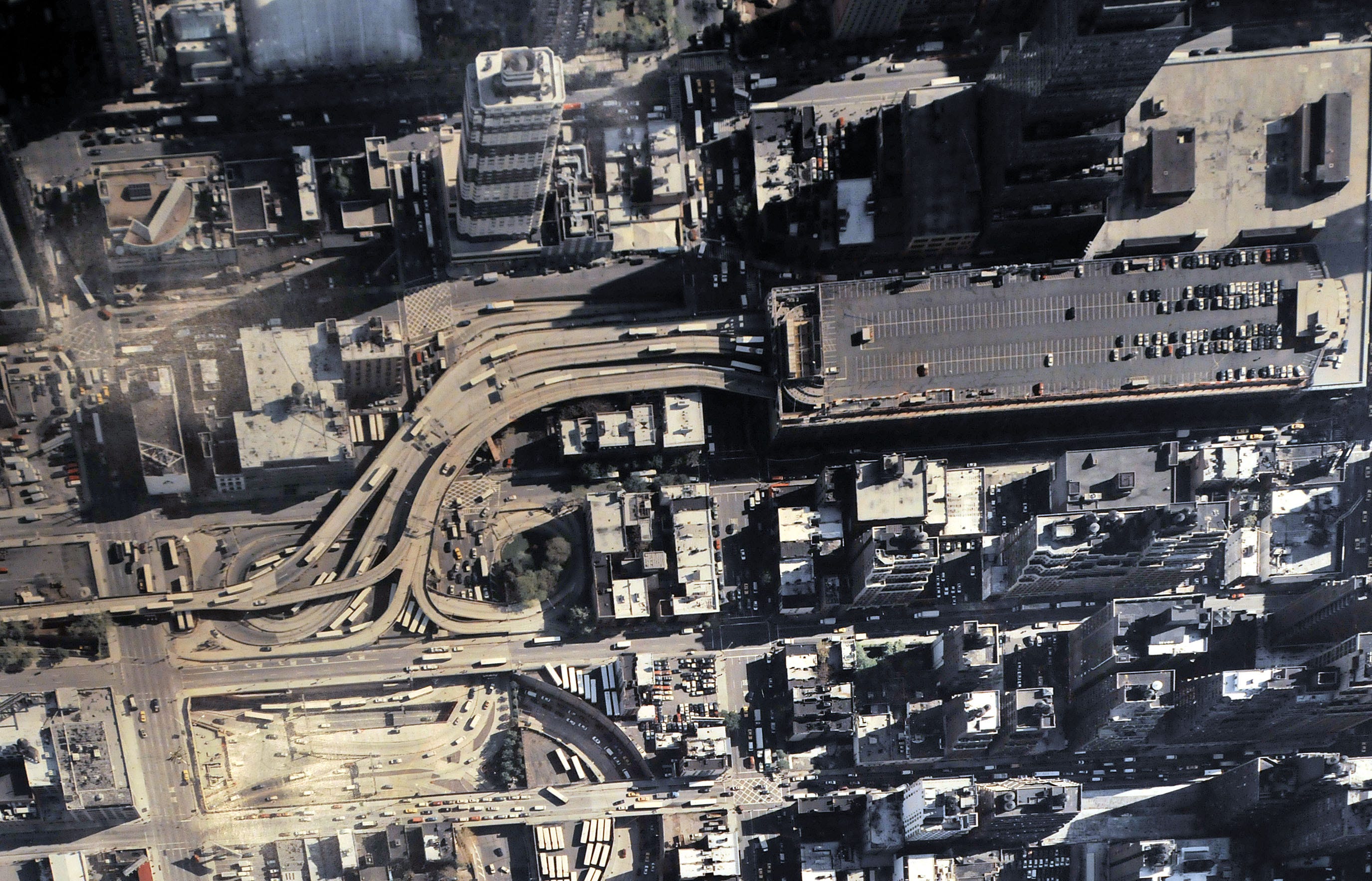
The terminal was expanded in 1960 and 1981, and it's needed again.
Despite some improvements in recent years, the slightest friction — a bus breaking down or one idling too long in the garage — causes a cascading effect of delays. Bus delays then cause crowding in the terminal, with commuter queues snaked around the building and down stairwells.
The Port Authority deemed the terminal obsolete in 2014.
“They ended up with a system, with an asset, that I believe has served the region very well over the years. And then you’re left with the truth of the matter in very large transit constructs — eventually time and resources begin to take their toll, and that’s exactly what’s happened at the bus terminal,” said Fulton, who is now on the board of directors at NJ Transit.
“When we began looking at the building in and of itself, we ran into real structural challenges that simply said, ‘You need a new one.’”
Port Authority: NJ senator Bob Menendez's son among new board members
Designing the world's busiest bus terminal for the future
The push to replace the Port Authority Bus Terminal was born in a nondescript room at the Richard Rodda Community Center in Teaneck, where Sen. Loretta Weinberg, the Senate majority leader, who is retiring at the end of this year, has held a number of commuter forums.
After listening to horror stories of constituent complaints about the commuter bus experience — from basic cleanliness to parents having to pay late fees to their child's day care provider because buses were so late — Weinberg became the loudest advocate for a new terminal. She frequented Port Authority board meetings for years to push the issue. Eventually they started listening, and studies for a new terminal commenced in 2014.
Reports, studies and brainstorms plodded along for the last seven years until January, when the Port Authority unveiled its preliminary design. Completed construction of that plan could be a decade away, at a cost that has not yet been made public.
The Port Authority is currently gathering public input and will be submitting a draft environmental report to the Federal Transit Administration.
The proposal would demolish the existing terminal and construct a new, slightly bigger one in the same location. An additional facility would be built on the west side of Ninth Avenue for bus storage and to serve commuters while the new terminal is built. New ramps at the new storage facility will connect to the Lincoln Tunnel and the rebuilt terminal. Four new towers for private development will be built to help cover the costs, and 3.5 acres of green space would be created for the public.

Commuters' top issues with the old terminal — and what they hope a new one will fix — are cleanliness, confusion, long lines and commute times.
Jeremy Chernikoff, who works for a digital marketing firm and used to ride the 167 from Teaneck, said his commute often took an hour and a half to travel roughly 14 miles to the terminal.
He said the facility is not very clean and is hard to navigate.
“It’s incredibly confusing for new riders or first-timers. The signage is awful,” he said, adding that overall “it’s kind of a depressing place. It’s just a really aged building.”
You’re talking about perhaps 200 people that have to congregate in the gates because when they start feeding up on escalators into an already crowded area, they have no where else to go and it quickly escalates to a dangerous situation.
New construction should improve the filth issues, and the design will feature natural lighting. Longer and taller buses, like MegaBus, would be able to pass through the terminal thanks to larger corridors, and electric buses will be able to charge between trips.
Michael Weinman, a bus commuter and managing director of the Rutherford-based consulting firm PTSI Transportation, said the design of the space will be critical to alleviating long lines of people waiting to board buses at the gates. Right now, the problems are broken escalators and not enough waiting space.
"You’re talking about perhaps 200 people that have to congregate in the gates because when they start feeding up on escalators into an already crowded area, they have no where else to go and it quickly escalates to a dangerous situation," he said.
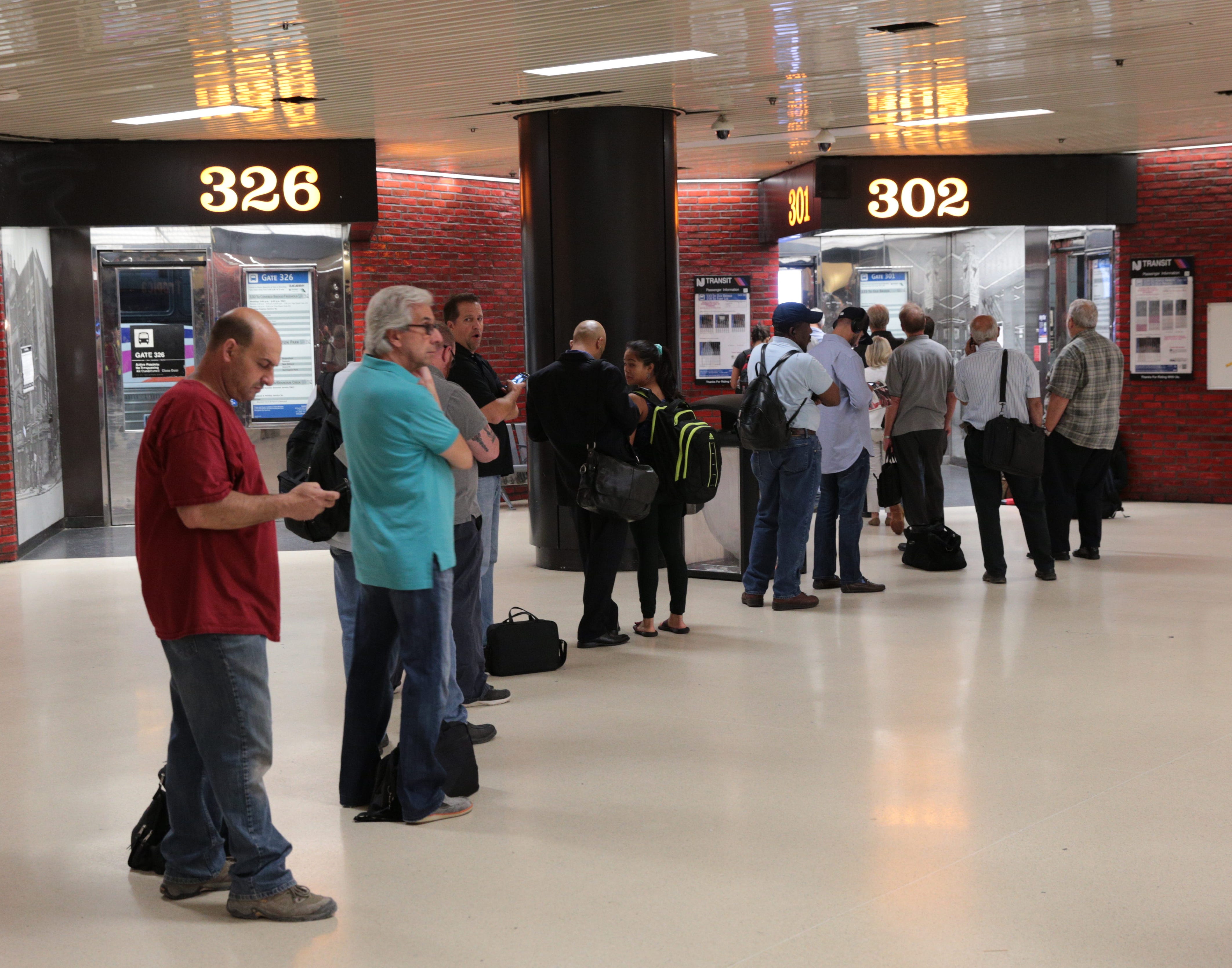
The trickiest challenge — and the one commuters care the most about — is making their bus trips as short and efficient as possible.
Port Authority planners Ehler and Plate said the new storage facility that will hold 350 commuter buses will significantly improve flow and should play a part in improving the commute time.
Here are some of the problems the new terminal should help fix:
- Bus storage: Giving buses a place to wait before arriving at their gate for boarding should improve on-time precision. Right now there isn't enough space to do that, and buses are forced to wait in a lot in New Jersey before the afternoon rush. Once in Manhattan, buses often have to circle the block around the terminal until there is enough room for them to pick up passengers.
- Easier exits: Redesigning the gates where buses pick up passengers should also improve efficiency so buses don't have to back up and wait for others to pass behind them in order to move out of the boarding area.
- More room to maneuver: Wider, two-lane ramps should also allow buses to move through the terminal when a bus breaks down. Currently, there is one lane in and one lane out, forcing everything to come to a halt until a broken bus can be towed out of the way.
But the terminal is just one part of fixing this transportation puzzle, said Schwieterman, the DePaul University professor.
"It’s like a giant Rube Goldberg machine where one part, one component must work seamlessly with another or the whole system can break down," Schwieterman said. "Building a great terminal that ends where buses end up sitting in traffic trying to get to New Jersey is a real risk. It would be a terrible outcome."
A more efficient terminal should improve some of the delays through the Lincoln Tunnel and exclusive bus lane (XBL), the dedicated lane in the morning that converges all buses into a single lane from I-495 into the Lincoln Tunnel from New Jersey. Further improving the XBL's efficiency will hinge on more sophisticated technology, Ehler said.
The Port Authority is overseeing a demonstration project this summer that tests autonomous-vehicle software with buses on a test track. Agency planners think the technology can increase the XBL efficiency by 30%, adding 10,000 bus commuters during the peak period.
The idea, also known as platooning, is a communication system that syncs buses together, and Ehler hopes it will allow commuter buses to move faster along the XBL by traveling closer together at faster speeds without driver intervention.
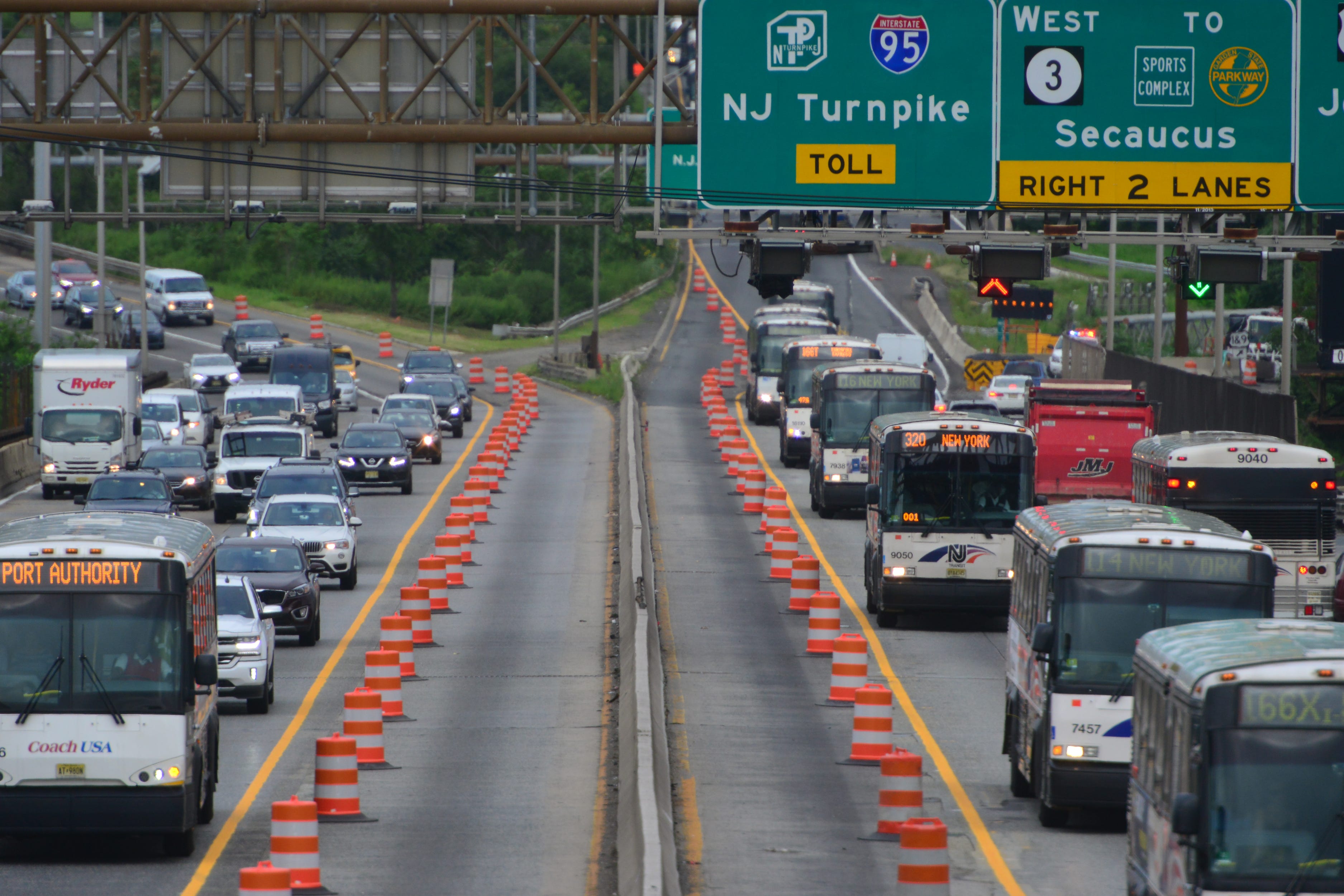
Something as typical as sun glare can slow the morning commute leading into the Lincoln Tunnel, Ehler said. This technology could eliminate that and other issues that cause drivers to slow down if buses are moving autonomously.
“If you can get the buses to stay in the lane, to talk to each other, to have closer spacing and even to travel at a faster rate of speed and not lose anything in terms of safety, I’m going to have a better trip,” Ehler said.
That system, however, would take buy-in and investment from the bus carriers and doesn't solve issues like bus breakdowns in the lane or tunnel.
Weinman, of PTSI Transportation, was skeptical that the terminal fixes and tech updates will go far enough to address all the traffic issues leading into the facility.
"You have a number of pinch points beyond the terminal … you have to watch this as a whole system, not a gate problem, not an escalator problem, not a Lincoln Tunnel problem," Weinman said. "Unless we take care of those pinch points, it’s not going to work as well as it should."
Fixing the terminal and making it a flexible building designed for future improvement is the first step, Plate said.
"We know things are going to change, so we try and inherently build it into the structure, into the facility, so we can make that switch, switch over from one technology to another," Plate said. "This is the largest and most sophisticated bus terminal in the world, and we’re going to raise that bar again."
Colleen Wilson covers the Port Authority and NJ Transit for NorthJersey.com. For unlimited access to her work covering the region’s transportation systems and how they affect your commute, please subscribe or activate your digital account today.
Email: cwilson2@gannettnj.com
Twitter: @colleenallreds